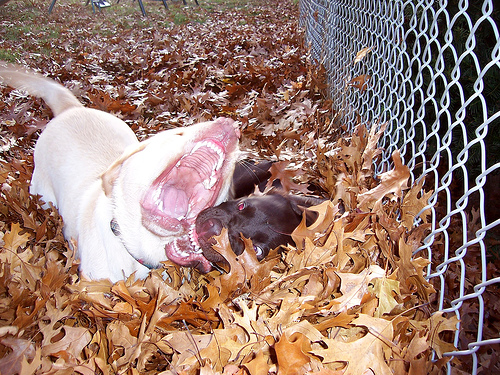
Rabies is an invariably fatal disease of warm-blooded animals and people. The disease is found worldwide, with the exception of a few areas (e.g. Britain, Australia, New Zealand, Japan, Hawaii, parts of Scandinavia).
Rabies is caused by a virus that infects the nervous system, resulting in a devastating range of symptoms that eventually end in death. Because so many wild animals carry the virus, public health efforts to eradicate the disease have consistently failed.
What animals carry rabies?
The known animal reservoirs of disease are: raccoons, skunks, foxes, bats, jackals, mongooses, feral cats, and wild dogs. Wild animals may not always show all the typical symptoms of rabies; indeed, many are asymptomatic carriers of disease.
Wild animals that are displaying uncharacteristic behavior or that appear to have lost their natural fear of man should be avoided. Always contact a public health official if you see a wild animal that you think may be carrying rabies.
How is the disease transmitted?
The rabies virus is shed in large quantities in the saliva of infected animals.
Transmission almost always occurs as a result of a bite wound from an infected animal. Less common methods of entry are introduction of virus (via saliva or bodily fluids) into a fresh wound or via the mucous membranes (e.g. ingestion).
What are the symptoms of a rabies infection?
The time it takes for an animal to develop signs of rabies is extremely variable. Some may develop signs within a week, while it may take other animals months before they are noticeably ill.
The onset of symptoms will depend on how quickly the virus spreads through the animal’s nervous system. The incubation period for cats and dogs is 2-11 weeks on average. The disease typically progresses in 3 stages: prodromal, furious, and paralytic; however, it is not uncommon for an animal to skip a stage (i.e. go from the prodromal stage straight to the paralytic stage).
Initially, if an owner suspects their animal has been bitten by a wild or rabid animal, they may see a change in attitude of their pet: signs of apprehension, nervousness, anxiety, shyness or hiding, or aggression. Pet owners may observe any of the following stages as the disease progresses:
Prodromal stage: the first stage of rabies typically lasts about 2-3 days.
Signs include:
• Fever
• Loss of appetite
• Behavior changes (e.g. restlessness, depression)
• Chewing or licking at the sight of the bite wound
Furious stage: the second stage of rabies last around 2-4 days (not all rabid animals go through the “furious” stage).
Common symptoms are:
• Irritability
• Barking
• Excitability
• Unprovoked aggression
• Vicious attacks on inanimate objects
• Unexplained roaming
Paralytic stage: this last stage lasts 2-4 days. Some animals will go straight from the prodromal stage to the paralytic stage.
The symptoms of the paralytic stage are:
• Paralysis of the larynx (throat) and face – this leads to difficulty swallowing, a dropped jaw, excessive salivation and foaming at the mouth, and a change in the tone of the bark
• As paralysis rapidly spreads to other parts of the body, the animal quickly progresses from depression, to coma and death
What should I do if I suspect my pet has contracted rabies?
If you suspect your pet has rabies, call a veterinarian and/or public health official immediately. Avoid any further contact with your pet. If pets are deemed to be a possible rabies risk, they will be placed in quarantine under observation for any developing symptoms of rabies.
Can rabies be treated?
There is no treatment for rabies – the disease is always fatal. Rabid animals should be euthanized immediately.
How can I prevent my pet from being infected with rabies?
There are a number of measures that pet owners can take to prevent their animals from being exposed to and potentially infected with rabies:
• Vaccination: all dogs and cats should be vaccinated from the age of 12 weeks
• Disinfection: all contaminated premises, cages, dishes, etc. should be disinfected with household bleach
• Prevent access to local wildlife (e.g. by shutting pets inside at night)
• Quarantine: animals entering rabies-free countries may have to undergo 6 months quarantine or be certified for vaccination against rabies
How can people minimize the risk of exposure to rabies?
People that work closely with animals (e.g. vets, animal control, etc.) are at the greatest risk for contracting rabies. However, anyone can potentially become infected with rabies.
There are a few common sense safety measures that people can take to prevent their exposure to disease:
• Avoid contact with wild animals – rabid animals will often lose their fear of man and make unprovoked attacks
• Vaccinate your pets
• If a person is bitten by a wild animal, the animal should be euthanized and tested for rabies
• People bitten by wild animals should contact a doctor immediately for rabies prophylaxis
Remember, rabies is a life-threatening disease for humans. Never take any unnecessary risks. Always contact public health officials if you are aware of a possible rabies threat, whether it’s a pet or wild animal.
(photo: kyleandkellyadams)